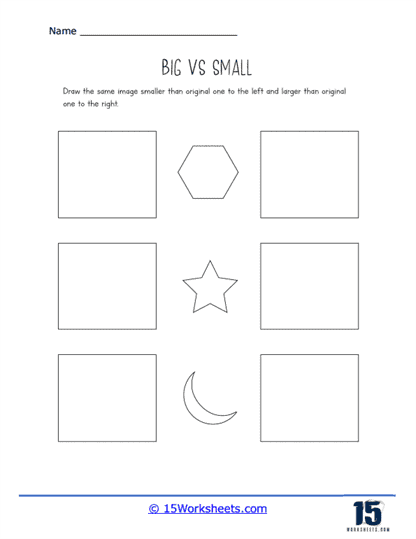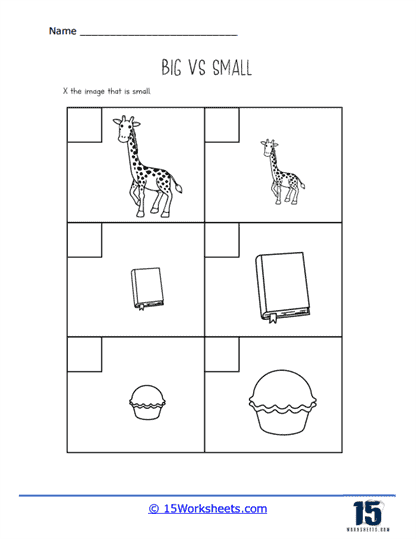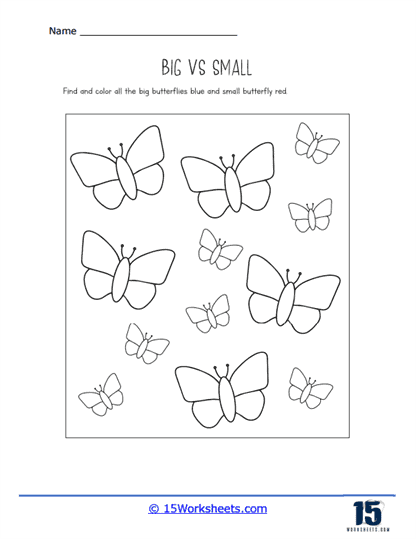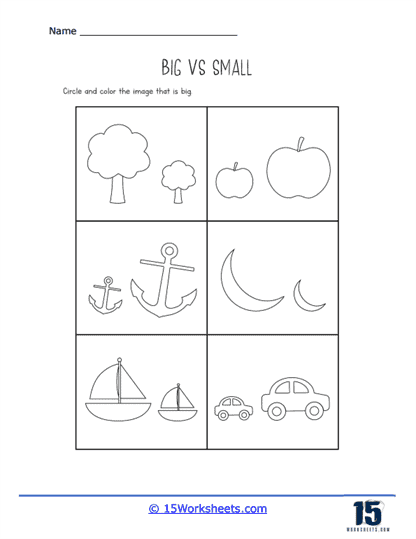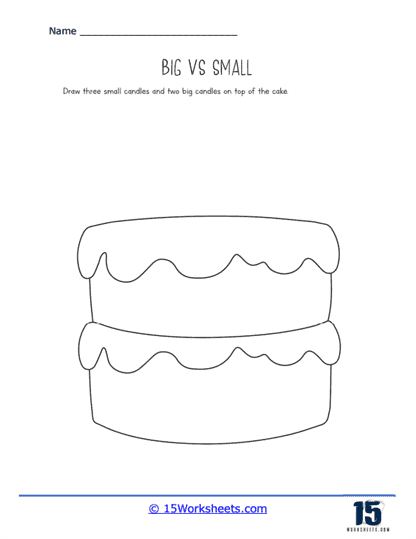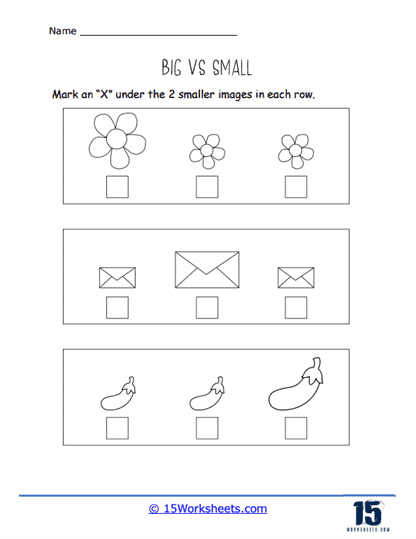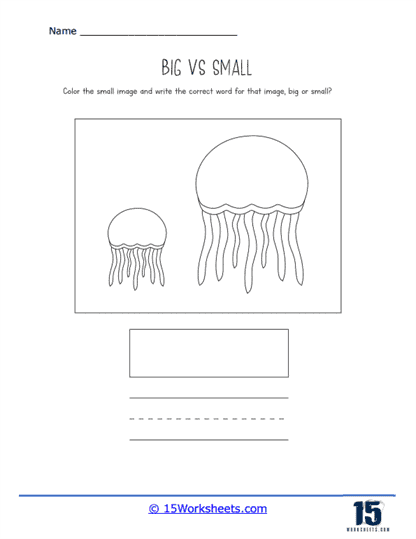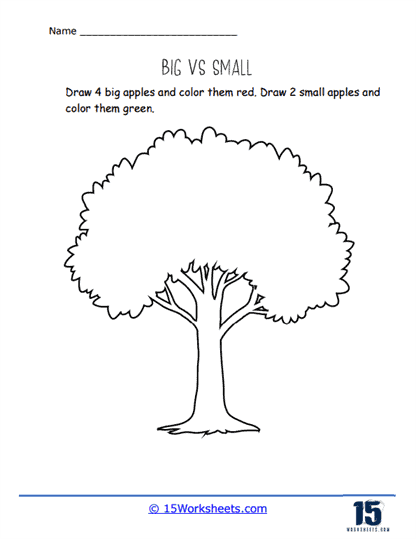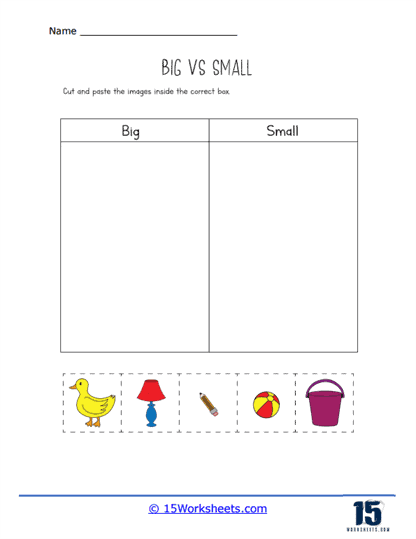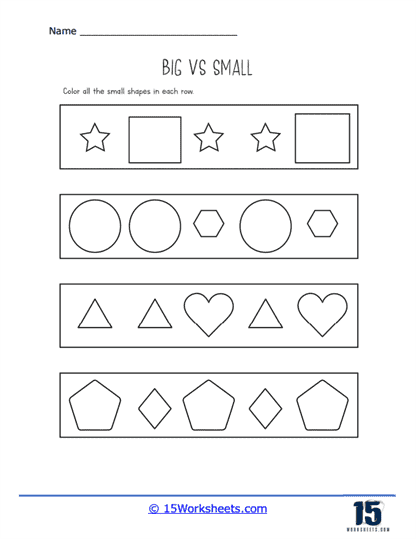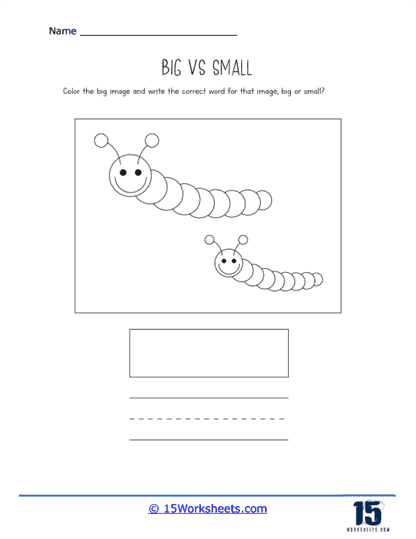Big vs. Small Worksheets
About These 15 Worksheets
This is a delightful collection where size matters, but in the most entertaining way possible. These worksheets are designed to help young learners grasp the concepts of size and measurement through engaging activities that compare objects based on their dimensions. Think of it as a fun-filled adventure where kids get to play detective, sorting and identifying items as big or small, all while developing critical thinking skills.
Each worksheet is a visual treat, featuring a variety of exercises that challenge students to distinguish between big and small objects. From circling the larger animal in a pair to sorting fruits by size, these activities are crafted to make learning about size comparisons both enjoyable and educational. The use of colorful illustrations and relatable items ensures that children remain engaged, turning what could be a mundane lesson into an exciting game of “Which is bigger?”
But it’s not all just fun and games—these worksheets are strategically designed to reinforce vocabulary and comprehension. By repeatedly encountering terms like “big,” “small,” “bigger,” and “smaller,” students naturally expand their language skills. Moreover, the exercises encourage them to articulate their reasoning, fostering communication skills as they explain why one object is larger or smaller than another.
The versatility of these worksheets makes them suitable for various educational settings. Whether you’re a teacher looking to supplement your classroom materials, a homeschooling parent seeking interactive content, or simply someone who wants to make learning about sizes more accessible, this collection has something for everyone. The activities can be easily integrated into lesson plans or used as standalone exercises, providing flexibility to cater to different learning needs.
Incorporating real-world objects and scenarios, the worksheets bridge the gap between theoretical knowledge and practical application. For instance, students might compare the sizes of different animals, fruits, or everyday items, making the lessons more relatable and memorable. This hands-on approach not only solidifies their understanding of size concepts but also enhances their observational skills, preparing them for more advanced mathematical concepts in the future.
They can be used in the classroom, at home, or during other educational activities to help children build their understanding of size and gain confidence in their ability to compare and contrast different objects based on their size.
Teaching the Concept of Big and Small
Teaching the concept of big vs. small in math lays an important foundation for future understanding of measurement, spatial awareness, and categorization. While it may seem simple, introducing size comparison requires a blend of hands-on exploration, visual reinforcement, and meaningful language development. Below are some enriched strategies that not only introduce the idea but also build critical thinking and early math skills in young learners.
1. Hands-On Exploration with Real Objects
Start by placing tangible, everyday objects into students’ hands-blocks, toy animals, apples, or classroom supplies of varying sizes. Ask guiding questions like, “Which toy is bigger?” or “Can you find something smaller than your pencil?” As children physically compare objects, encourage the use of descriptive language like “bigger than,” “smaller than,” “the biggest,” and “the smallest.” This direct interaction makes the abstract concept concrete and fosters both cognitive and verbal development.
2. Engaging Visual Aids with Purpose
Use colorful posters, storybooks, or digital slides that clearly show size contrasts-like a huge elephant next to a tiny mouse. Reinforce the concept by involving students in group discussions: “What makes the elephant big? What makes the mouse small?” Drawing their attention to features like height, width, or volume builds a deeper understanding than just labeling. You can also create class anchor charts where students contribute images or drawings of big and small objects they discover around them.
3. Intentional Sorting and Classification Activities
Sorting is a natural and developmentally appropriate way for children to explore size. Provide a mixed collection of items (buttons, cut-out shapes, utensils, etc.) and ask students to sort them into “big” and “small” categories. For added challenge, include medium-sized items and introduce the idea of comparing relative size. As students sort, prompt them to explain their choices, which strengthens reasoning skills and vocabulary.
4. Introducing Measurement for Deeper Comparison
Once students have a grasp on visual and conceptual size, introduce basic measurement tools like rulers, string, or non-standard units (e.g., paperclips, blocks). Ask them to measure and compare the lengths of different objects. For example, “Which book is longer? How many blocks tall is your water bottle?” These tasks introduce precision and lay the groundwork for later concepts in math such as units of measure, number sense, and data analysis.
5. Reinforcement Through Music and Movement
Children learn best when learning is joyful-and nothing gets them moving like a good song. Incorporate catchy tunes and rhymes that reinforce big vs. small concepts, like action songs where they “grow big like a giant” or “curl up small like a mouse.” Movement-based learning helps reinforce size vocabulary kinesthetically while boosting engagement, especially for young learners who benefit from active, sensory-rich experiences.

